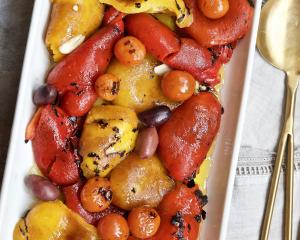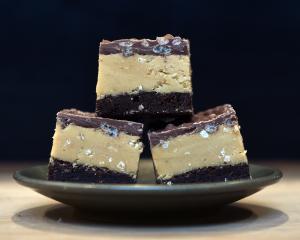
Dust, pearls, crystals, chunks - if there is a new way to use honey, Dana and Megan Young aim to find it.
The boutique honey producers from Lawrence are on a mission to find innovative ways to add value to honey while continuing to emphasize quality over quantity.
With 450 hives within a 100km radius across the wider Tuapeka region of South Otago, the couple have been mainly concentrating on producing clover honey but also produce kamahi, manuka blend, kanuka and rata honey depending on how the season goes.
Not content to just produce honey, the couple are developing new products made from honey for use in professional kitchens.
Their work has been many years in the making. Dana grew up on a farm in Lawrence before heading to his mother’s family in Northland.

It was there he met Megan and began working in the honey industry.
It was suggested he could do better making the most of the clover honey potential in his home region, which was relatively untapped.
"I thought about it. Talked to farmers around and they were saying there was a lack of beehives around the area."
So, about five years ago, the Youngs and their two children moved back to Lawrence to see if they could get ahead with a new venture.
"It was tough."
Dana started out with 40 hives on local farms in the first year, learning as he went with help from YouTube.
"The favourite was the Fat Bee Man. We’d watch that every night. There was a lot of trial and error."
Their aim was and remains to produce honey in an ethical way, so they remove only the surplus honey, ensuring their bees have enough to get them through the winter and spring, until the main nectar flow starts in summer. This practice eliminates the need to feed with sugar.
Dana has also been trialling an organic varroa treatment, which has worked well.
The honey is raw and unpasteurised. Their ultimate goal is to get to the point where they can show consumers where each jar of honey has come from.
"So they can track it from the hive, the farm it is on, the whole story."
The trials and tribulations of the honey industry and its manuka honey regulation changes meant it has not been an easy industry to be involved with. It meant planning long term rather than focusing on short-term problems.
So they changed tack and began to look at other ways to produce and sell their honey.
A year ago, they came up with their brand — Tuapeka Honey — and decided using sustainable packaging, such as glass jars, was important to them.
"It’s a constant process trying to be a bit different to the competition."
They tapped into the demand for comb honey from the hospitality sector and used the comb leftover from that to create a honey chunk product. They package the chunks with liquid honey.
"A lot of countries overseas do it, so we thought we’d give it a go."
A chance meeting with Great Taste New Zealand’s John Millward has also given them the ideas, support and contacts to be even more innovative.
"He’s been a real mentor to us."
They have developed a honey granule, which can be used as a sweetener in hot drinks or as an alternative to lollies for a sweet hit, but have hit a snag — they do not want to put it out to the market unless the packaging is sustainable and, at the moment, the only packaging option in New Zealand
that keeps moisture out is foil.
Another product they are developing is a honey powder, which can be used instead of sugar in baking. About 120g of honey powder is equivalent to about 1 cup of sugar.
"And it’s a byproduct of making the honey crystals. It gives a great flavour, but we’ve got to get the packaging right."
For the consumer, while it may be healthier, it is also more expensive. It has been hard work getting to this point but they believe it has been worth it.
They have become involved with the local community, providing honey for their school fundraisers and talking to pupils about bees and honey production.

Granola
Makes 6-7 cups
2 cups of oats
½ cup of sesame seeds
2 cups of cornflakes
1 cup of rice bubbles
½ cup of hemp hearts
400g of macadamia nuts
400g of chopped peanuts
½ cup of dried fruit of choice (optional)
½ cup coconut oil
1 cup Tuapeka Honey
Method
Mix dry ingredients in a large bowl and add melted coconut oil with Tuapeka Honey. Stir together thoroughly and combine with the dry ingredients and stir until it is all mixed together thoroughly and evenly.
Spread out on a large roasting dish or oven tray and fan bake on 120degC for 45 minutes or until lightly toasted and golden in colour.

Fruit smoothie
Makes 2
½ cup of frozen mixed berries or mango
1 banana
1 Tbsp of hemp hearts
2 tsp of pollen
1 Tbsp of collagen (optional)
1 Tbsp of Tuapeka Honey
Additional/optional
1 kiwifruit
1 Tbsp of natural yoghurt
Method
Place ingredients in a food processor and add enough water to cover them. Blend until smooth.













